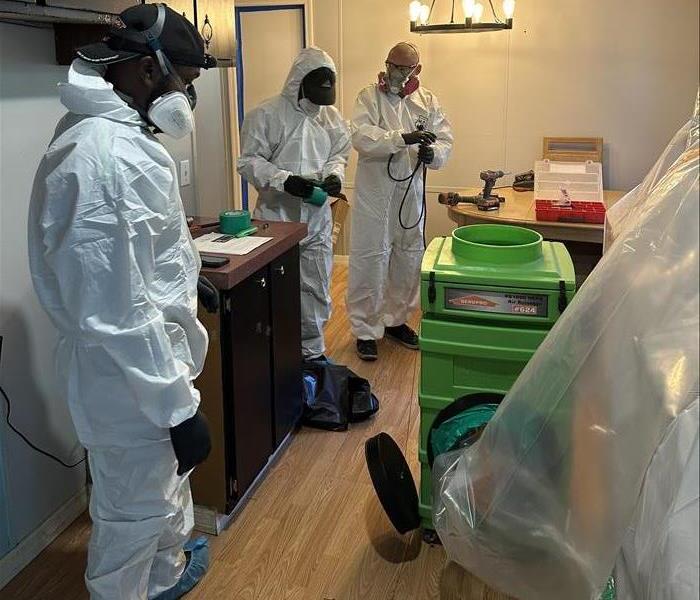Mold Exposure in Your Home: Recognizing Signs and Taking Action
11/30/2023 (Permalink)
Mold is a common issue that can silently infiltrate your home, posing potential health risks to you and your family. Recognizing the signs of mold exposure is crucial for early detection and prompt remediation. In this blog post, we'll discuss the telltale signs of mold exposure in your home and the steps you should take if you suspect mold is present.
Signs of Mold Exposure:
Musty Odor: A persistent musty or earthy odor in your home, especially in areas like basements, crawl spaces, or bathrooms, can be a strong indicator of mold growth.
Visible Mold: Obvious signs of mold growth, such as dark or discolored spots on walls, ceilings, or surfaces, should not be ignored.
Allergic Reactions: Mold exposure can lead to allergic reactions, including sneezing, coughing, itchy eyes, and skin irritation. These symptoms may worsen when you're inside your home.
Respiratory Issues: Mold spores released into the air can lead to respiratory problems, especially for individuals with allergies or asthma. Persistent coughing, wheezing, or shortness of breath may be signs of mold exposure.
Water Damage History: If your home has a history of water damage or leaks, it's essential to be vigilant for signs of mold, as moisture provides an ideal environment for its growth.
Steps to Take if You Suspect Mold:
Safety First:
- Prioritize safety by wearing personal protective equipment, including gloves, a mask, and eye protection, before investigating further.
Assess the Situation:
- Determine the extent of the suspected mold growth and whether it's limited to a specific area or more widespread.
Isolate the Area:
- Seal off the affected area to prevent the spread of mold spores to other parts of your home. Close doors and use plastic sheeting and tape to seal vents and openings.
Contact SERVPRO:
- Mold remediation is a complex process that requires professional expertise. Contact SERVPRO to assess and address the mold issue.
Avoid Disturbing the Mold:
- Avoid touching or disturbing the mold, as it can release spores into the air and exacerbate the problem.
Turn Off HVAC Systems:
- If mold is suspected, turn off your heating, ventilation, and air conditioning (HVAC) system to prevent the spread of mold spores.
Document the Situation:
- Take photos and make a written record of the suspected mold growth, including its location and any visible damage.
Stay Informed:
- Learn about mold and its health risks to make informed decisions during the remediation process.
Follow Professional Recommendations:
- SERVPRO professionals will assess the mold issue, create a remediation plan, and provide guidance on necessary actions and repairs.
Conclusion:
Mold exposure is a concern that should not be taken lightly, as it can affect both your home's structural integrity and your family's health. Recognizing the signs of mold exposure and taking prompt action is crucial for a safe and healthy living environment. If you suspect mold in your home, don't hesitate to contact SERVPRO for professional mold remediation services. Our experienced technicians have the expertise and resources to safely and effectively address mold issues, ensuring your home is restored to a clean and healthy condition. Your well-being and peace of mind are our top priorities.





 24/7 Emergency Service
24/7 Emergency Service
